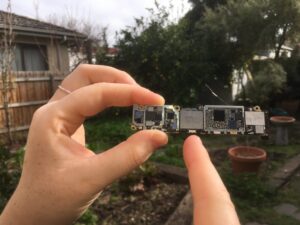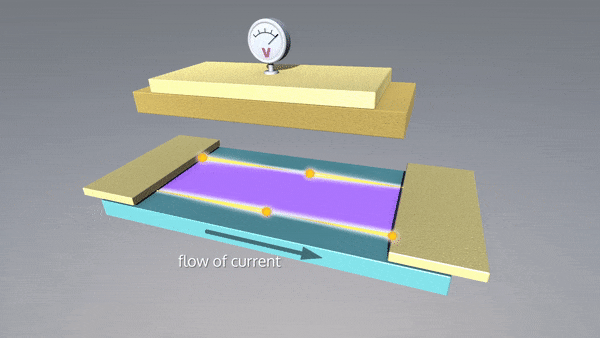The necessity (and price) of our digital connection

The postage-stamp sized chip at the heart of an iPhone 5 contains 2 billion silicon transistors, connecting us to a global network
An unprecedented number of Australians working from home during the 2020 coronavirus pandemic is a stark reminder of how vital electronic connections have become to community and economy.
Computing has transformed society: we use our ubiquitous smartphones to access up-to-date weather predictions, to plot the best route through traffic, and to binge watch Tiger King. And we expect more in the future: we want our devices to translate language in real time, and allow us to travel to new locations in 3D virtual reality. We want self-drive cars and an ‘Internet of Things’ where every device talks to every other device.
However, further growth of computing faces a significant barrier, formed by the energy required to power it. Energy used in ICT already represents 8% of global electricity use, and is doubling every decade. Moore’s law—the steady, exponential improvements in computing technology of the last 50 years—is now flat-lining, and along with it the energy efficiency of computers is stalling.
Fortunately, exciting, emerging areas of physics offer potential ‘beyond CMOS’ solutions: advances in quantum materials allow for radical new systems in which electricity can flow with minimal resistance and therefore minimal wasted dissipation of energy, at or close to room temperature. Importantly, these quantum-material fields are areas where Australian physicists have already established significant expertise over the last decade.
Emerging areas of physics reducing wasted dissipation of energy
Topological materials (recognised by the Nobel Prize in Physics in 2016) represent a paradigm shift in condensed-matter physics. Topological insulators conduct electricity in one-way paths along their edges, without the ‘back-scattering’ of electrons that dissipates energy in conventional electronics.
Superfluids are another quantum state in which electrical current can flow with minimal wasted dissipation of energy. With scattering prohibited by quantum statistics, charge carriers can flow without resistance. New superfluids of excitons or exciton-polaritons promise room-temperature dissipationless devices.
Two-dimensional (2D) and novel materials underpin each of the fields of physics above, as the electronic properties of a material are transformed when that material is reduced in thickness to electron-wavelength scale. Australia has established expertise in novel, atomically-thin, 2D material synthesis and characterisation, such as at the Monash Centre for Atomically Thin Materials and the Institute for Superconducting and Electronic Materials (Wollongong).
Importantly, use of 2D materials allows for technology that can operate at (or close to) room temperature. Systems that require ultra-cold temperatures to operate (such as superconductors) invariably use far more energy to keep cool than they save in electronic dissipation.
The application of these fields to a new generation of low-energy electronics technology sits at the very limits of what is possible in condensed-matter physics. Successful implementation in functioning devices will depend on Australian expertise in nanoscience, nanofabrication and nano-scale measurement.
Existing Australian expertise in these areas has translated to a multidisciplinary search for ultra-low energy electronics at FLEET, which is an Australian Research Council Centre of Excellence joining over 100 researchers in seven Australian universities.
More information FLEET.org.au | @FLEETCentre


